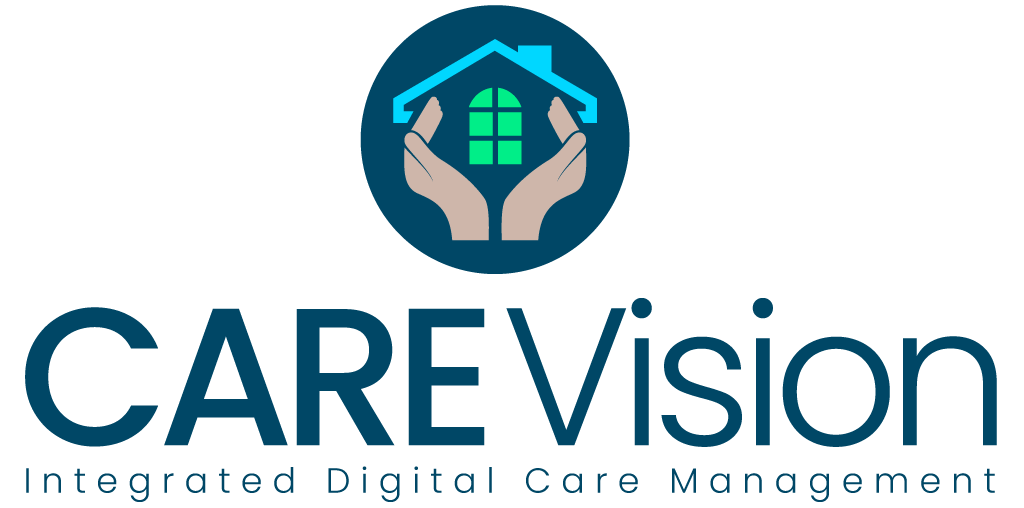Why did you use choose Care Vision?
We looked at three providers of electronic point of care management systems and Care Vision were an obvious best fit because of the following reasons:
1. The Care Vision Care Home Management Software was efficient and user friendly.
2. Due to their background in health and social care, they spoke our language, wanted to build long lasting relationships, and supported us to move with ease from paper records to a cloud-based Care Management system.
3. We have never heard them say “we can’t do that at our next software update”
4.They wanted to work with us collaboratively and recognised that we did not want an off the shelf system. It needed to be bespoke to our care needs. We agreed a small upfront payment to aid its development and then they worked closely with us to develop the system to meet our specific healthcare needs:
a. Digitalising the National Early Warning Score
b. New alert systems including Accessible Information standards
c. Baseline assessment
d. Seizure monitoring
e. Handover presentation
f. Fluid management
g. Glasgow Coma Scale
5. Event Reporting – submitting an incident report (clinical, non-clinical, accident and critical) with an investigatory module to undertake a root cause analysis/system-based analysis and the ability to record any external reporting (CQC, CCG, HSE under RIDDOR). Those departments not with handheld devices or access to a laptop were provided with a tablet.
In addition to the care modules, we have also introduced the visitor book at each home (a tablet at main reception) and we are currently implementing the HR module which has been further developed with us to meet our human resource needs including immigration requirements.
What is the training and support like?
Implementation happened without incident and to plan. Training was given by the Care Vision team online and on site, then our Service Improvement Manager implemented cascade training throughout the workforce.
We are currently evaluating the modules we use and developing standard operating procedures to ensure the system is used more effectively as we become more experienced with the system and its abilities. The support given is excellent and the Care Vision team help immediately or work to make the system work for us as quickly as they are able.
Have the staff found that they have saved time and are adding more info/detail to their care records?
As we continue to fine tune the system for our purposes and this is taking time but with worthwhile outcomes.
Accessibility
Electronic point of care has eliminated the manual processes of seeking a record and retrieving it. All those things take significantly more time and effort with paper. That can make all the difference in situations where emergency access to a patient’s records is necessary. Second, physical distance between the person accessing the record and its storage location are no longer concerns with digital records.
Accuracy and Efficiency of Documentation
There were concerns that Nursing and Care staff tended to record information and transcribe when they were able to do so (at the end of a shift). This meant that records in an emergency may have not be updated and observations could be potentially sitting in a carer’s pocket, and we were reliant on memory many hours later. We never as an organisation accepted this and however much you ask that staff not to follow this practice, we must be realistic about the fact that some do.
By making an entry at the point of care, staff are not spending time updating records on mass but were more available throughout the shift to care for the patient.
There is even the ability to dictate into the system in English or if preferred by the individual in their first language which then is translated. We have a diverse workforce, and this helps enormously to improve the written record.
Archiving, completeness & searchability
Paper must be archived in a secure facility and when patients are in our care for multiple years and in some cases decades, then this leads to vast amounts of paper archiving at great cost. In addition, multiple records are then on occasion required to be reviewed and this is then in turn a huge undertaking to provide the information that may be being requested.
Having a patient’s documentation in one central place enables the evaluation of care to be more efficient and much more clinically effective. Digital health records are often more complete than paper ones. Part of it might be due to the facilitation of retrieval.
Cost
The costs involved in paper records come from multiple sources. The first being from its creation, which itself takes money. Then there are the costs of storing these documents and then subsequent archiving.
Security
Both paper and digital documents have vulnerabilities. Both have possibilities for securing them against prying eyes and ensuring GDPR is adhered to. With the ability to password protect the electronic point of care system, patient records are less likely to be seen by those not really entitled to be reviewing a patient’s records. Digital does have advantages. Perhaps the most important one here is the audit log. This is a record of who accessed a patient file or made alterations to it throughout its history.
Sharing
Ultimately, we hope to be able to share documentation with other healthcare facilities through for example, the e-red bag system. Paper records have to be printed, copied, and then transported securely and we do currently have to print off records and send them with the individual. We are confident that this will be a possibility in the very near future.
Would you recommend Care Vision to other providers?
I would recommend Care Vision to other providers without hesitation. As they advertise, their Care Management System is designed by care providers for care providers.
What makes us different to the rest?
Trust, reliability, and an excellent working relationship/partnership. I hope that our collaboration with Care Vision will bring benefits to others.





